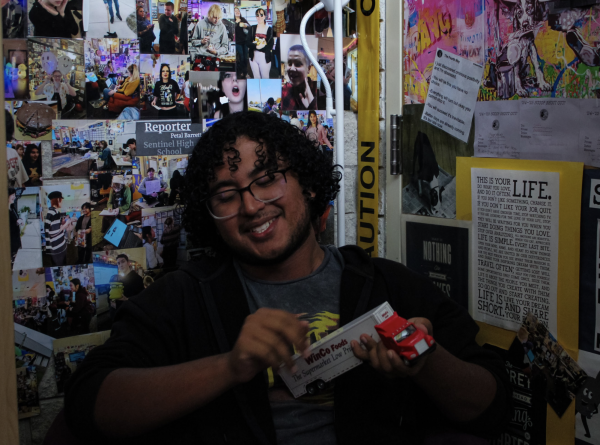
(Diego Morales)
Hello. Welcome to Fermi’s -dark- forest.
In this series, I will dissect people’s lives and examine how disabilities have molded them. Apart from the biological aspect, I am most intrigued by the social -and therefore emotional- ramifications of a disability. From my fragile perspective, I imagine the disabled are swept under the rug, only to be acknowledged when a family member joins their ranks.
But to be sure, join me on this odyssey.
_________________________
To be embraced, to feel the wind grace your body. Warmer than a father’s hug, it seemed impossible that it could ever abandon you. Now in this sullen anarchy, the once liberating sky is farther than a pipedream.
_________________________
Hannah Deakin, the persistent robin. At 33 years old Deakin has experienced the world in its ruthless glory. But more importantly, Deakin experiences the world through two backgrounds. For 14 years Deakin was a frolicking youth, experiencing the delights of a world invented for her.
However, life changed when Deakin’s ankle was struck during a game of netball. The hit penetrated a nerve, starting a chain reaction known as complex regional pain syndrome (CRPS). Soon, her entire leg was rendered useless; on crutches, Deakin began reflecting. The future which once on her palm, was now slipping into obscurity. As her condition darkened, Deakin was learning to accept a life without college, but no matter the effort, she just couldn’t shake the social-emotional implications. In a wheelchair, would anybody love her, could she survive childbirth, was her future decimated?
In that darkness, a mundane person could only imagine the desperation: the tears shed by friends, the heartaches felt by family, and the overpowering remorse tearing at Deakin. At this point it was rock bottom, everything had been destroyed. Only by a complete miracle, would everything work out.
Thankfully, Deakin became her miracle. By first accepting help Deakin began to stabilize her condition, then by studying for her GCSE in math she started to rebuild her future. By staying consistent – one day at a time – Deakin overcame the colossal challenges that came with maintaining a “normal” life.
In particular, Deakin recalls the inconsideration of the world. When a wheelchair became her main mode of transport, it was shocking to see the amount of public spaces that were designed without simple mobility accommodations in mind. Deakin interprets this as “Society and the environment often disabl[ing] us more [than our injuries]”. This problem then directly compounds against the already giant monetary issues that come with a disability. The medical equipment on top of the costs of arranging affordable work, housing, etc., just- overwhelms a person. In Deakin’s case, she was lucky, there was a family network supporting her needs. But for the less fortunate, Deakin claims that “You [would] need to be a millionaire to be disabled”.
But apart from the physical or literal problems, Deakin would still have to face off against existential complications. The most prevalent of these issues was the catch-22 of expectation.
Essentially a positive feedback cycle; the Catch-22 of expectation describes a cynical pattern in which people underestimate Deakin and feel pressure. Deakin overworks herself, now overestimating her people ask for more, and as Deakin falls behind people start to speculate over her – restarting the process.
However, in her life, Deakin doesn’t want pity. She doesn’t want to be seen as a beggar, or as she emphasizes, a “Money Scrounger”. Deakin admits that “there is a tiny percentage of people who abuse the system”, but also believes that the remaining demographic isn’t full of sterile people; rejecting to expand their abilities. Instead, Deakin suggests the opposite. She views the remaining population as desperate workers, always inching toward a better life.
Some of the most creative people Deakin has met are disabled. The obstacles of the day-to-day have trained them into paragons. Working twice the effort of a normal person has turned them into “some of the most determined people”.
Through her blog, Hannah’s Hope, Deakin wants to spread this message. By giving speeches and posting slice-of-life content, Deakin is a spearhead leader who leads by example.
Now, as she holds a part-time job with public speaking as a pastime, Deakin is not only on the path to making a complete recovery but on the active pursuit of growth.
If you would like to keep a closer eye on Deakin’s journey, please check out her blog.
_________________________




